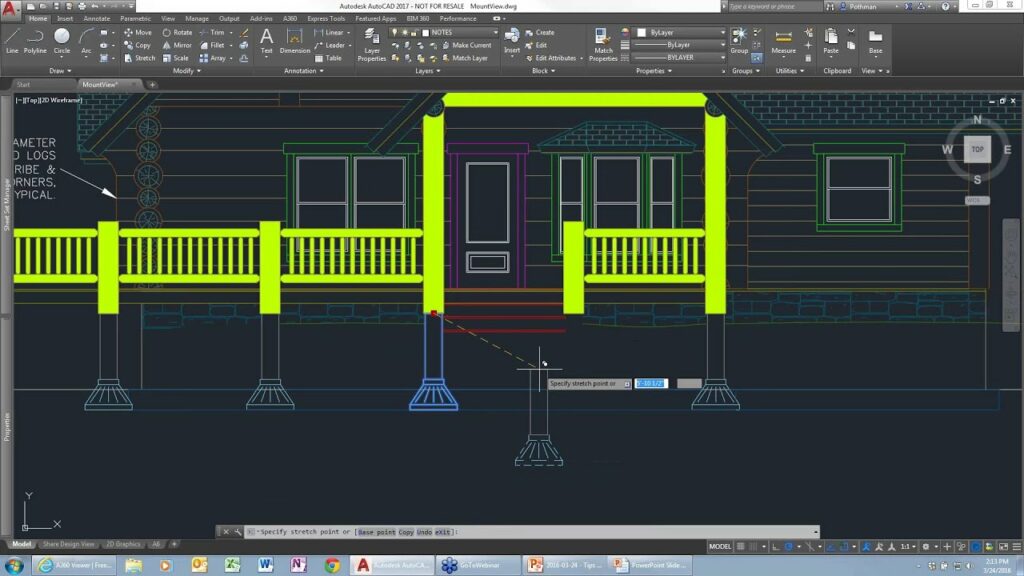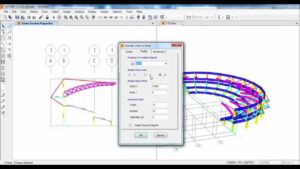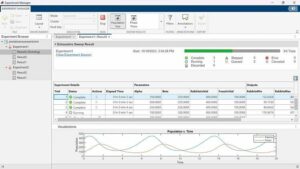Unveiling Excellence: A Deep Dive into the New Features of AutoCAD 2017

Introduction:
AutoCAD, the venerable computer-aided design (CAD) software, has consistently evolved to meet the dynamic needs of designers, architects, and engineers. The release of AutoCAD 2017 marked another significant step in this evolution, introducing a host of new features and enhancements designed to streamline workflows, enhance collaboration, and elevate the overall user experience. In this extensive guide, we will delve into the plethora of tips and tricks that showcase the innovative features of AutoCAD 2017, empowering users to harness the full potential of this cutting-edge design tool.
I. SmartCenter and SmartScale: A Smarter Approach to Design:
- Introducing SmartCenter:
- AutoCAD 2017 unveiled the revolutionary SmartCenter feature, transforming the way users create and modify objects.
- SmartCenter intelligently identifies the center of a selected object, streamlining the process of aligning, dimensioning, and modifying designs with unparalleled precision.
- Precision with SmartScale:
- SmartScale, another groundbreaking addition, enables users to scale objects effortlessly without losing their reference points.
- This feature provides a level of accuracy previously unmatched, ensuring that scaling operations maintain the integrity of your designs.
II. PDF Import: Seamless Integration of External Data:
- Dynamic PDF Import:
- AutoCAD 2017 introduced native support for importing PDF files directly into the design environment.
- This feature allows users to leverage external data effortlessly, eliminating the need for third-party conversion tools and streamlining the incorporation of PDF drawings into their AutoCAD projects.
- Enhanced PDF Underlay:
- Building upon the PDF import feature, AutoCAD 2017 allows users to work more efficiently with PDF underlays.
- Navigate, snap to, and reference geometries within PDF underlays with improved precision, enhancing collaboration and simplifying the integration of external information.
III. 3D Graphics Performance: Elevating Visualization:
- High-Resolution Graphics:
- AutoCAD 2017 prioritized enhanced 3D graphics performance, providing users with a smoother and more immersive experience.
- High-resolution graphics contribute to more realistic visualizations, empowering designers to create and evaluate intricate 3D models with unprecedented clarity.
- Visual Experience Enhancements:
- The new AutoCAD brought visual experience enhancements, including support for 4K displays.
- This not only caters to the demands of modern hardware but also ensures that the software’s interface is optimized for high-resolution monitors, enhancing the overall user experience.
IV. Enhanced Reality Computing: Bringing Designs to Life:
- Integrated Reality Computing:
- AutoCAD 2017 embraced the era of reality computing by integrating Autodesk Recap 360 capabilities.
- Users can seamlessly integrate point cloud data into their designs, enabling a more accurate representation of existing conditions and facilitating better decision-making during the design process.
- Live Maps Integration:
- The new release also featured an integration with Autodesk InfraWorks 360, allowing users to incorporate live maps and geographic information into their designs.
- This integration opens up new possibilities for contextualizing designs within real-world environments, enhancing the decision-making process and ensuring designs are more closely aligned with their surroundings.
V. Collaboration and Documentation: Enhanced Workflows:
- Improved Sharing Capabilities:
- AutoCAD 2017 addressed collaboration challenges by enhancing sharing capabilities.
- Users can now easily share their designs with team members, clients, and stakeholders by directly attaching DWG files to emails, promoting smoother communication and collaboration.
- Advanced Text to MTEXT Conversion:
- The new version improved the process of converting text to MTEXT, streamlining the creation of detailed documentation.
- Users can now convert text objects into a single MTEXT object more efficiently, reducing redundancy and enhancing the readability of their designs.
VI. Customization and Personalization: Tailoring AutoCAD to Your Needs:
- Personalized User Interface:
- AutoCAD 2017 empowered users with enhanced customization options for the user interface.
- Designers can now tailor the ribbon and panels to better suit their workflows, optimizing their workspace for maximum efficiency.
- AutoCAD 360 Integration:
- AutoCAD 2017 seamlessly integrated with AutoCAD 360, the cloud-based platform, allowing users to access their designs from anywhere.
- This integration facilitates collaboration on the go, ensuring that designers can work on their projects anytime, anywhere, and on any device.
Conclusion:
In conclusion, AutoCAD 2017 introduced a myriad of features and enhancements that propelled the software to new heights of functionality and efficiency. The SmartCenter and SmartScale features revolutionized object manipulation, the PDF import capability streamlined external data integration, and the emphasis on enhanced 3D graphics provided a more immersive design experience. The software’s embrace of reality computing, collaboration improvements, and advanced customization options further solidified AutoCAD’s position as an industry leader.
As designers, architects, and engineers continue to push the boundaries of innovation, AutoCAD remains a trusted ally, adapting and evolving to meet the demands of the ever-changing design landscape. By incorporating these tips and tricks into their workflows, users can unlock the full potential of AutoCAD 2017, ensuring that their designs not only meet but exceed the expectations of precision, creativity, and efficiency in the world of CAD.







